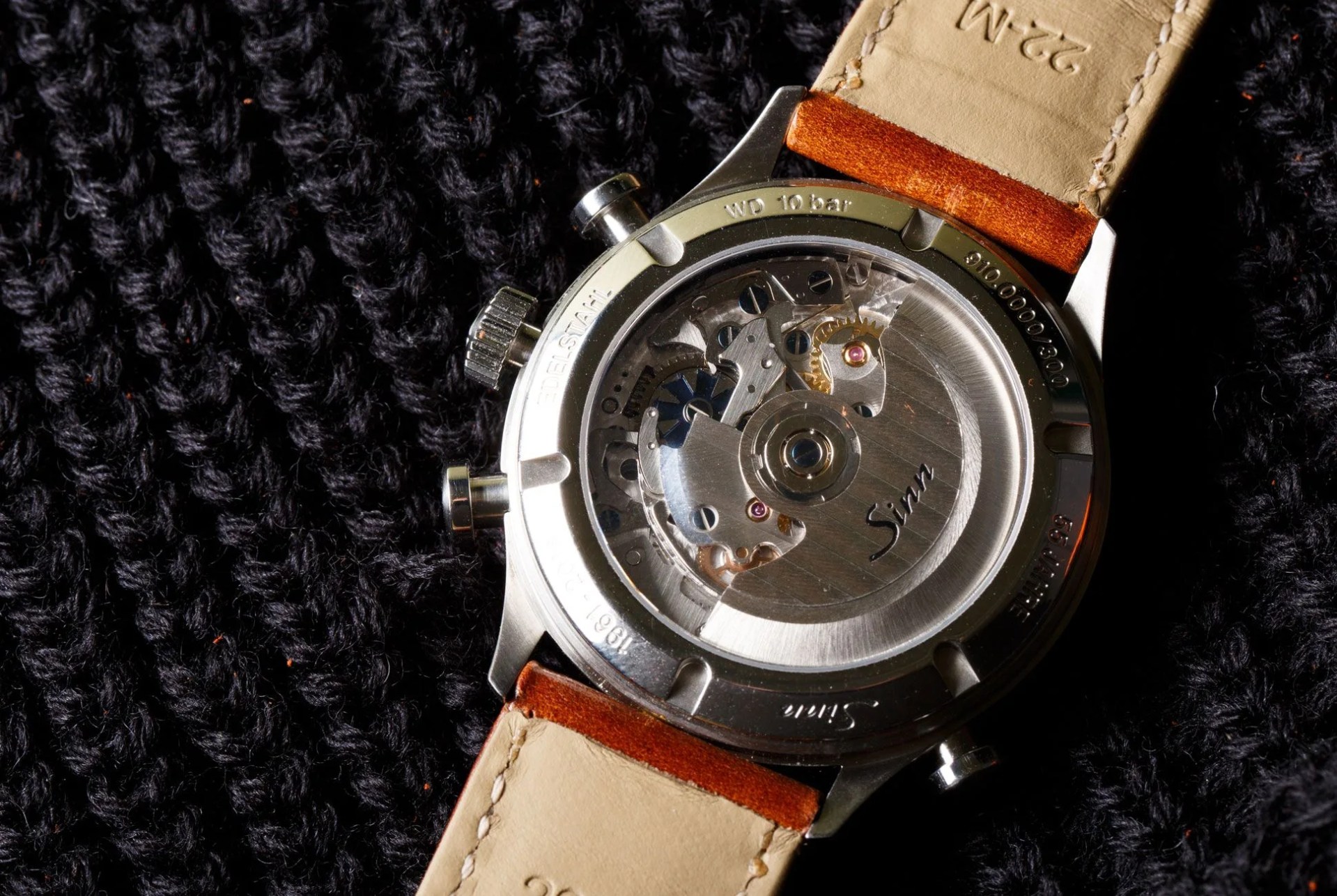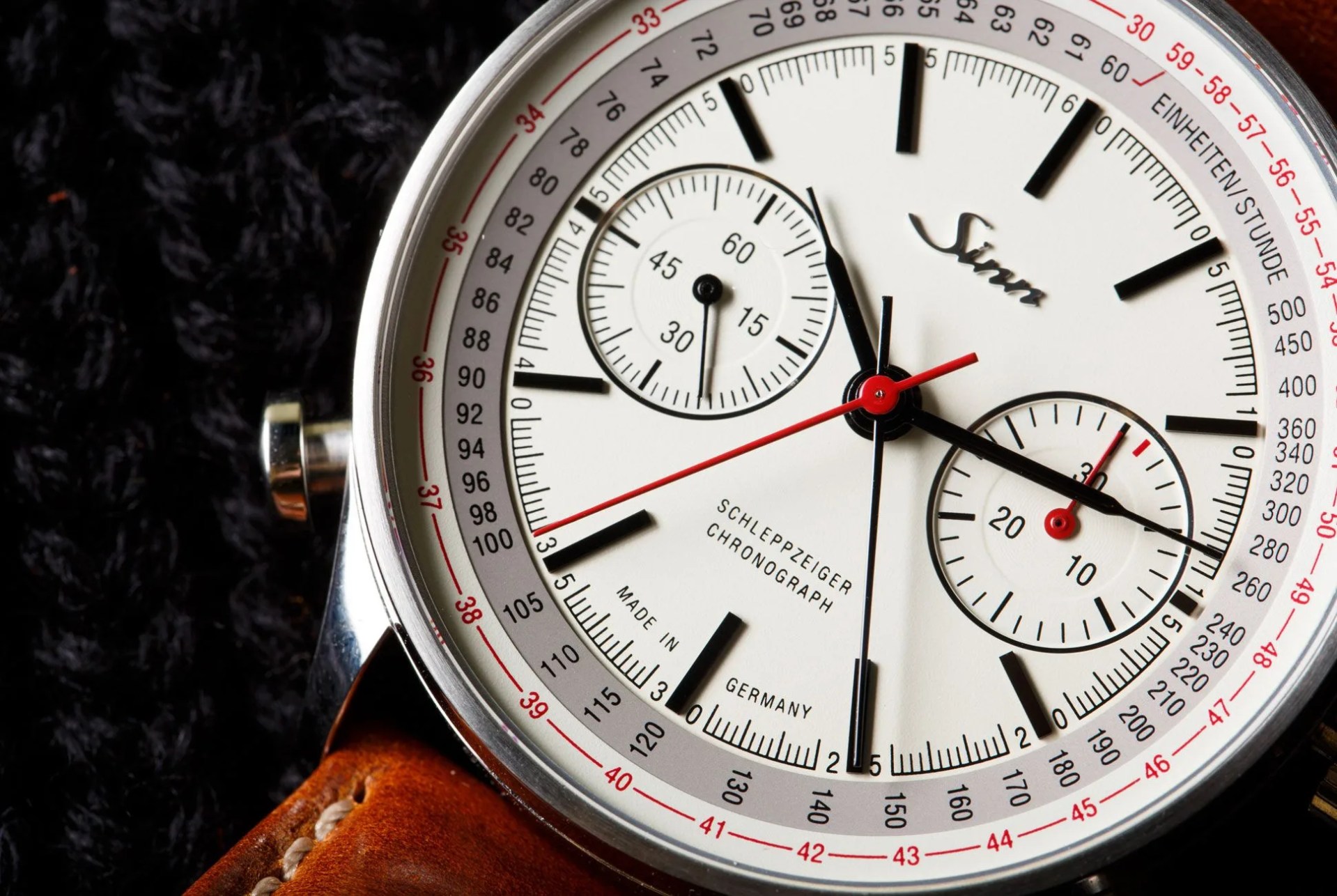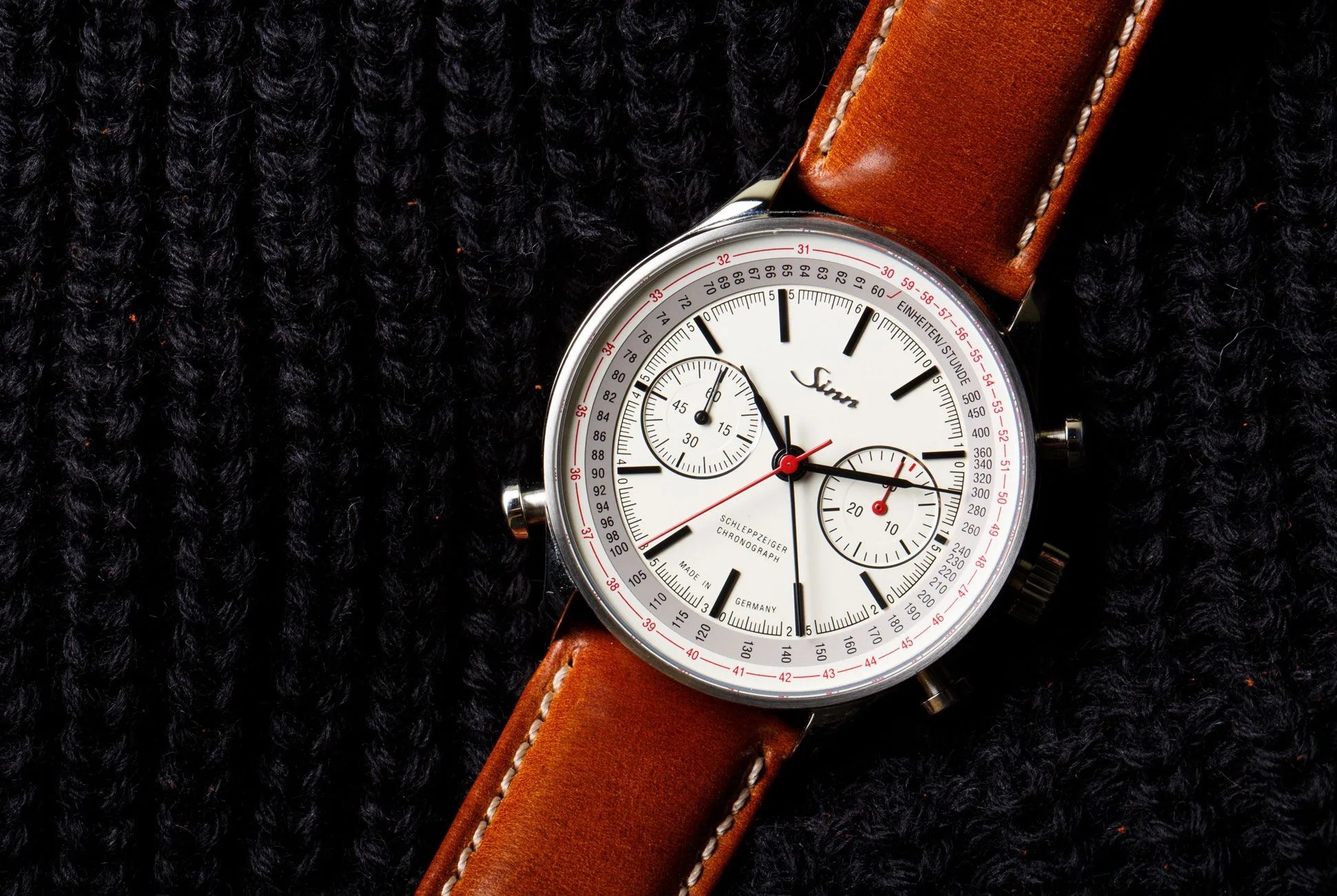May 14, 2016: a hammer dropped in Geneva, a punctuation mark on a new world record. A Rolex 4113 sold for nearly $2.5 million, the most for any Rolex at auction. It sold for the same reason a ’62 Aston Martin sold for $14.3 million at auction months before. The 4113 is revered by folks in the know for its design, its engineering and its exceeding rarity. Just 12 exist. It’s also the only Rolex to feature a split-seconds chronograph movement.
At its core, a split-seconds (rattrapante if you’re French or Swiss and schleppzeiger if you’re German) movement is a fairly straightforward chronograph, but with an additional seconds hand for the chronograph function and a third pusher. Depress the pusher at two o’clock and both seconds hands begin to spin the circumference of the dial. Push that extra pusher and the second seconds hand stops. Write down the time. Press that third pusher again and it catches up to the other seconds hand, which hasn’t stopped moving. Now you have the ability to record multiple times at once, on one watch.
If you’re, say, an Olympic referee or a racing official or simply a fan of horse racing during the ‘50s, a split-seconds makes a lot of sense, but today (hell, even back when it was technically relevant) the split-seconds is (and was) a complex and rare engine which, arguably, makes Sinn’s 910 quite a steal at just under $6,000. The 910 is, ostensibly, special edition celebrating the 55 years that have passed since the company’s founding in 1961, but in an industry where “special” and “limited edition” can entail a simple change in dial color, there’s more at play here.

For starters, this is the only watch in Sinn’s current lineup to feature a split-seconds movement. Sinn partnered with La Joux-Perrot to modify the venerable Valjoux 7750 with a split-seconds module. Going a bit further than the fairly barebones 7750, this movement features more detailed polishing and finishing touches like blued screws and gold chatons, coveted by watch nerds. The modifications also replace the 7750’s coulisse-lever system with a more intricate column wheel design. Again, it’s a feature desired by those who understand the difference between such things. If you don’t, all you really need to understand is (A) it requires more precision to make than the cheaper coulisse system, and (B) it provides a smoother pusher feel.
Protecting that gem of a movement within has always been Sinn’s strong suit, and the best of Sinn’s tough engineering is on display here. The pushers use Sinn’s D3 system, which, in lieu of placing the pushers inside a tube (as in a normal watch,) sets them directly into the case, creating a seal normally achieved through screw-down pushers. The watch is also water resistant to 100 meters and shock-resistant to DIN 8308 standards, which, according to Sinn, essentially stipulates that the watch can survive a 3kg hammer blow at 4.43 meters per second (almost 10 mph, so, a pretty good shot) without throwing the accuracy of the movement off by more than a minute per day. It’s impervious to magnetic fields up to 4,800 A/m (the base standard for anti-magnetic watches) and, should you find yourself in space (or at least atop a tall, tall mountain), is supposedly “low-pressure resistant.”

